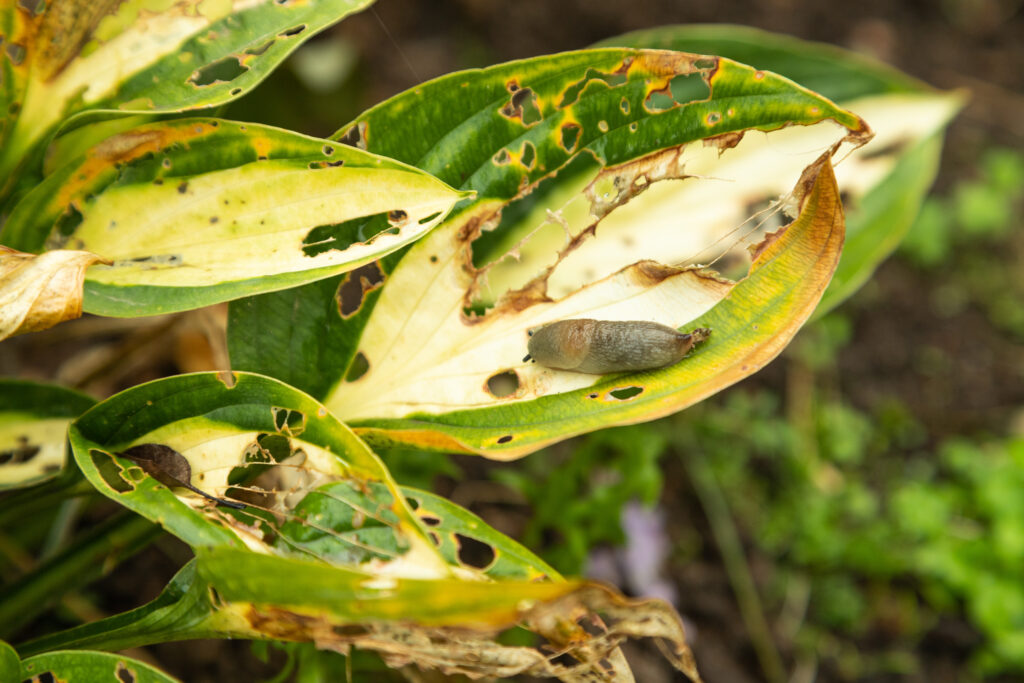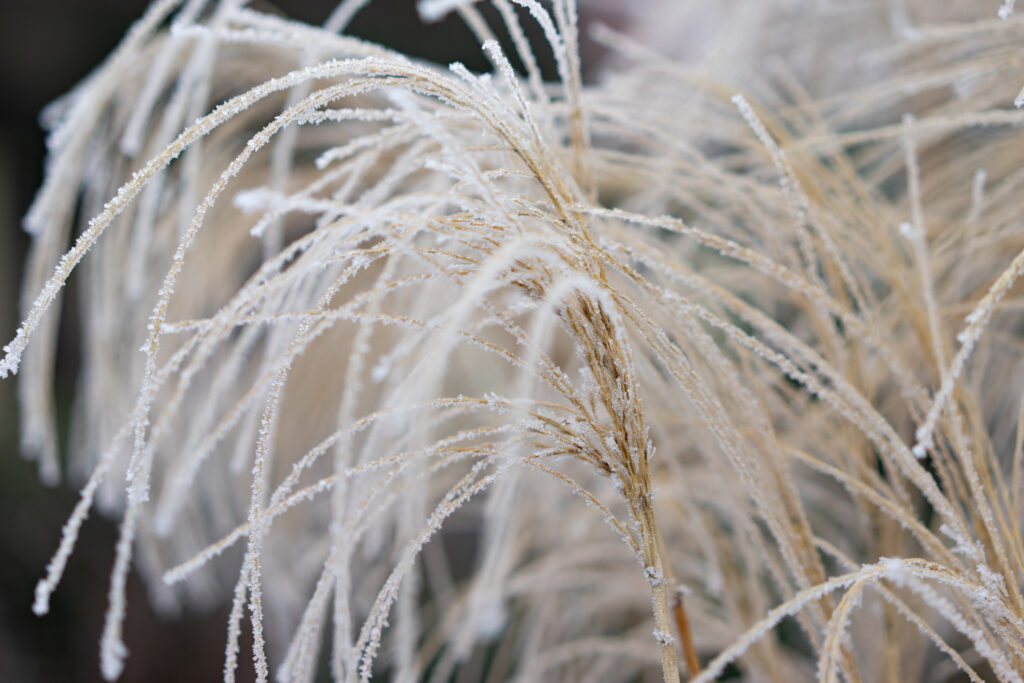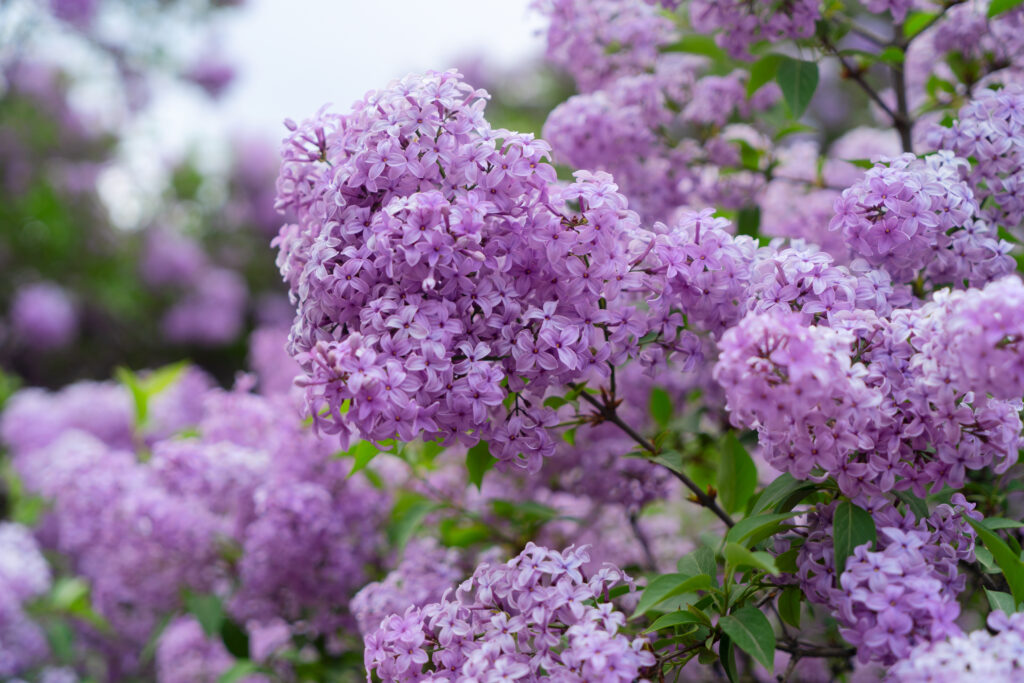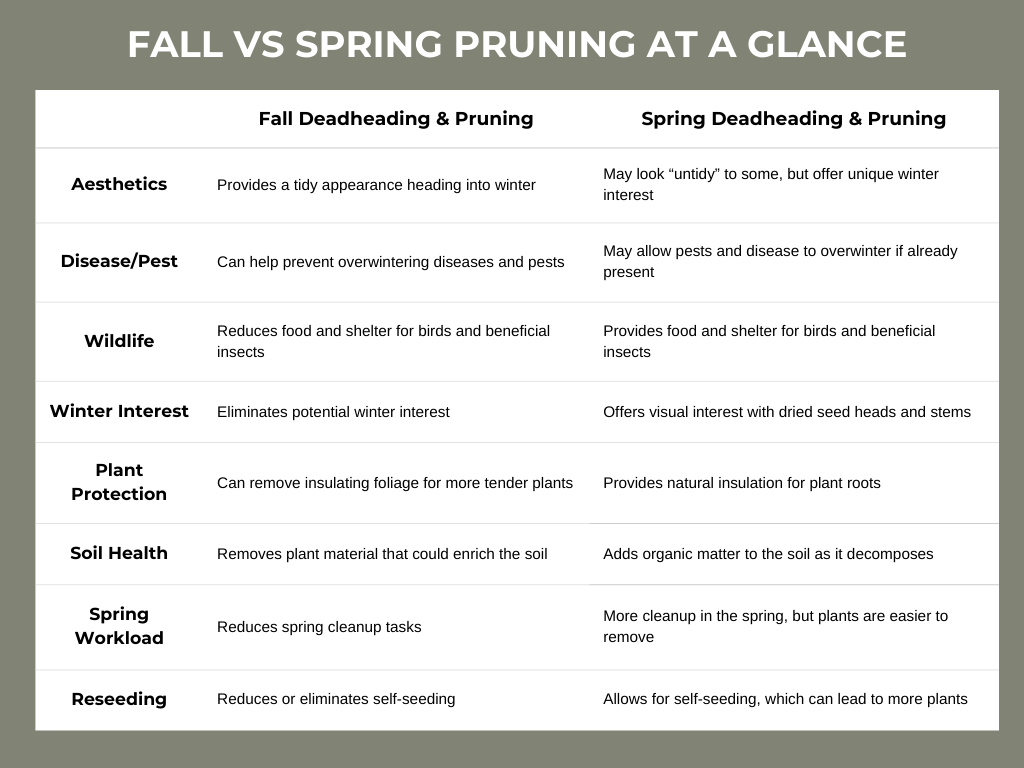Fall Cleanup or Spring Refresh? A Guide to Pruning Perennials
As we approach autumn and our gardens begin to wind down for the season, you may find yourself asking a common question: Should I cut back my perennials now, or wait until spring?
The answer isn’t as simple as a yes or no. In fact, there’s no one-size-fits all approach. The right timing for pruning will depend on your plants, your priorities, and even you personal gardening style. Here’s a breakdown of what to consider when deciding whether to deadhead and cut back in the fall or hold off until spring.

Why You Might Prune in the Fall
Tidy Aesthetics: If you prefer a clean look heading into winter, fall cutbacks can neaten up your landscape. Additionally, some plants may not provide anything visually throughout the winter – perhaps that turn mushy or black once frost sets in – these are fine to cut back in the fall.
Disease Prevention: Plants showing signs of powdering mildew, rust, or other diseases should be cut back in the fall. Common plants used throughout the development that are notorious for getting powdery mildew include phlox, monarda (bee balm), and peonies. Always remove and discard diseased material – don’t compost it.
Specific Plant Needs: Some perennials, like hostas and peonies, may benefit from a fall cutback to prevent winter damage or overwintering pests. Hostas, for example can harbor slug eggs in their fallen leaves, making fall cleanup beneficial.

Defensible Space: From a Firewise perspective, pruning now removes dry stems and leaves that could act as fuel. Keeping the first five feet around your home clear is especially important.
Plant Division: Fall can be a good time to divide and cut back overgrown grasses and spring or summer blooming perennials.
Lighter Spring Workload: Tackling these tasks now can ease the load when spring rolls around.
Why You Might Wait Until Spring
Support for Wildlife: Seed heads and hollow stems provide winter food for birds and shelter for pollinators and other beneficial insects.
Winter Interest: Dried grasses and seed heads can add striking visual interest when dusted with frost or snow.

Natural Insulation: Leaving dried foliage in place provides insulation for the roots of more tender perennials during winter. Ornamental grasses, for example, generally benefit from being cut back in the spring, before new growth begins, to provide protection for the plant’s crown during the cold season.
Soil Health: As the plant material decomposes, it returns organic matter and nutrients to the soil.
Easier Cleanup: After a season of snow and weathering, dried plants are often easier to remove in spring.
Right Plant, Right Time: Some plants—like lilacs, forsythia, and other spring bloomers—flower on old wood and should never be cut back in fall. Semi-evergreen perennials such as heucheras or dianthus also don’t need much pruning, just a light tidy-up in spring. Get to know your plants before you whip out the pruners.

Firewise Benefit: Even if you leave plants standing for wildlife, keep dry material away from structures. Prune closer to your home in fall and leave plants farther out for winter habitat.

Practical Tips for Either Season
- Always cut back diseased or pest-infested plants in the fall and dispose of them properly.
- Cut perennials back to about an inch or two from the ground. The extra stubble makes it easier to spot the plant in the spring, before new growth emerges. You can cut them shorter, it won’t damage the plant, as the new grow comes from underneath the old stems, emerging from the root system.
- Wait until plants have gone dormant and turned brown and before cutting back in the fall
- In spring, cut back grasses and perennials before new growth emerges
- Keep tools clean and sharp to prevent damage and disease spread.
- Mix it up! Consider pruning some plants now and saving others for spring based on their condition, your aesthetic goals, and how much wildlife you’d like to support.
Bottom Line
Fall pruning helps manage disease, pests, and fire risk, while spring pruning supports wildlife, adds winter beauty, and nourishes soil. Many gardeners find a hybrid approach works best—prune near the house in fall for Firewise safety and leave some plants standing farther out for habitat and seasonal interest.
Choose the approach that fits your garden, your lifestyle, and your priorities—there’s no single “right” way.
CATEGORY
9/02/2025
a word from our viewers